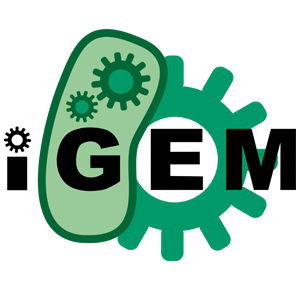Team:UiOslo Norway/Project
From 2014.igem.org
StianLagstad (Talk | contribs) |
|||
| Line 10: | Line 10: | ||
</div> | </div> | ||
| + | <div class="container"> | ||
| + | <div class="row"> | ||
<p><img src="https://static.igem.org/mediawiki/2014/d/d8/UiO_Oslo_signalingmechanism.png"></p> | <p><img src="https://static.igem.org/mediawiki/2014/d/d8/UiO_Oslo_signalingmechanism.png"></p> | ||
| + | </div> | ||
| + | </div> | ||
Revision as of 11:40, 17 October 2014
Project Overview

Organ
The cell is the basic structural, functional, and biological unit of all known living organisms. Because the cells have all equipment and expertise necessary to carry out the functions of the life, they are considered the smallest unit of life that can replicate independently.
The unicellular organisms are made up with just one cell and their main groups are: bacteria, archaea, protozoa, unicellular algae and unicellular fungi.
On the other hand the multicellular organisms are more complex and consist of multiple cells. The animals, including human beings, are multi-cellular. An adult human body is composed of about 100,000,000,000,000 cells!
Each cell has basic requirements to sustain it, and the body's organ systems are largely built around providing the many trillions of cells with those basic needs (such as oxygen, food, and waste removal).
A tissue, such as muscle, nervous and connective tissues, is an organized system composed with different kinds of specialized cells.
Similarly, an organ is an organized and differentiated structure of various tissues performing independently a specific function, such as the stomach, the skin and the brain.
The organs carry out functions as:
- Communication between cells
- Supplying the cells with nutrients
- Controlling exchanges with the environment
Source: http://www.nature.com/scitable/ebooks/essentials-of-cell-biology-14749010/15625600 8/09/2011
Microorganism
A microorganism or microbe is a diverse unicellular or multicellular mostly microscopic organism that includes all the bacteria and archaea and almost all the protozoa. They have also some members of the fungi, algae, and animals.
They are considered the oldest form of life on Earth and wandered it hundreds of millions of years before the dinosaurs.
Microorganisms can be found and are able to live in every part of the biosphere including terrestrial, aquatic and extraterrestrial habitats, extreme environments and in other organisms, such as our digestive systems. Similarly, they are tolerant to many different conditions such as limited water accessibility, high salt content and low oxygen levels. Although they are well adapted, not every microorganism can survive in all habitats, as each type of it has developed to live within a narrow range of conditions.
These organisms are essential components of every ecosystem. Indeed, they are essential to nutrient recycling and other compounds throughout the environment, by acting as decomposers and oxygen generators.
Furthermore, they are very exploited in the biotechnology field, such as in food and beverage preparation, in water treatment, in energy production, in manufacturing of chemicals, enzymes and other bioactive molecules and in science. A small percentage of microorganisms are pathogenic and cause disease or even death in plants and animals, having, consequently, an important role in health.
Sources:
- http://www.sciencedaily.com/articles/m/microorganism.htm
- Madigan M, Martinko J (editors) (2006). Brock Biology of Microorganisms (13th ed.). Pearson Education. p. 1096. ISBN 0-321-73551-X.
Our Project
The mOrgan or micro-Organizer is a layered system for organizing E. coli in a predetermined and organ-like way.
This system can be applied in several fields of science and needs. In this context, the mOrgan is built up with different types of bacteria that form an organized structure and communicate to each other to perform specific functions, like organs.
Thus, whatever is done in mOrgan occurs in a multi-step process within the different layers of the system.
The E.coli will have a surface identity given by regulation of downstream genes and the mOrgan will be formed in an organized way. This property helps to avoid random bacteria linking to each other and creating uncontrolled growing colonies, keeping the correct configuration.
Applications
For instance, mOrgan can be useful in industrial manufacturing, industrial degradation, remediation processes, drug delivery systems, drug metabolism studies, catalytically amplified sensors, regulatory networks, biocomputers and so forth.
 "
"

